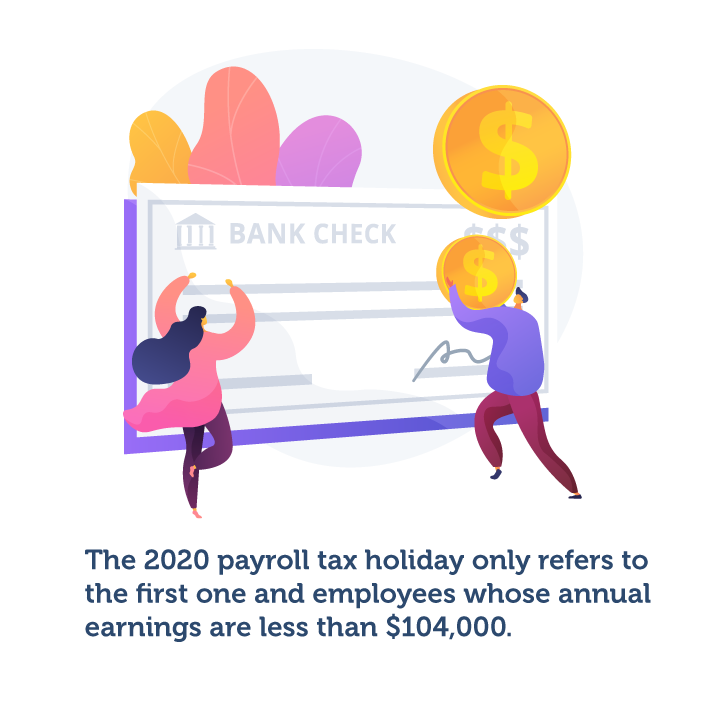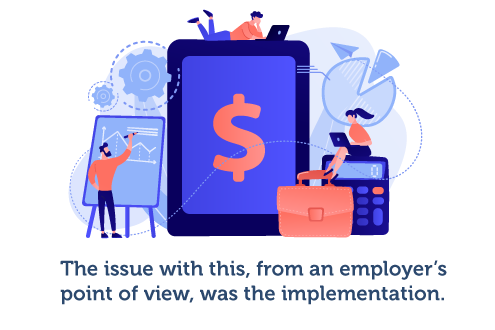
A Comparative Analysis of ADP Competitors in Payroll Processing
Delve into the analysis of ADP’s payroll processing services and compare them against the biggest ADP competitors.

In 2020, in the middle of a struggling economy influenced by a pandemic, the U.S. government released a series of COVID-19 relief plans.
One of them was the payroll tax holiday.
The IRS issued Notice 2020-65 to aid taxpayers, which deferred Social Security payroll taxes. As part of the Coronavirus, Aid, Relief and Economic Security (CARES) Act, the measure temporarily allowed employers and employees to reduce some of their tax expenditures.
However, even though it was a relief effort on behalf of lawmakers, some companies and employees remained skeptical. They passed on the opportunity, perhaps due to the scarce information given by the IRS Notice.
Experts also warned that this plan could affect taxpayers negatively since they’ll have to repay the deferred taxes eventually.
To identify potential concerns, in a detailed overview, we’re going to explore all aspects of this holiday on payroll taxes and what it means for both workers and companies.

Over the last few decades, there have been several payroll tax deferrals, usually after a poor economic performance such as a recession or inflation.
The latest, however, was a temporary financial relief meant to kickstart the economy and help people and struggling businesses cope with the setback caused by COVID-19.
Initially, it was in motion between September 1 and December 31, 2020, with a repayment period until April 31, 2021. However, а presidentially-signed Consolidated Appropriations Act extended the payment until the end of 2021.
Answering how the payroll tax holiday works means looking into what payroll taxes are and what their suspension means for all involved parties.
Namely, workers and businesses pay different taxes to their local and federal government agencies, including Social Security tax, federal and state unemployment, local, and Medicare.
The 2020 payroll tax holiday only refers to the first one and employees whose annual earnings are less than $104,000.
The current Social Security tax rate is 12.4%, the same as in 2020.
It means that for every dollar an employer pays their workers, a little more than 12 cents go into tax cuts. However, employers and employees split the costs, leaving each party with a tax expense of 6.2%.
So, with the tax deferral, the government decided to “lend” this money to employees and businesses interest-free, however, with the promise to return the same amount in the designated repayment period.
The employee payroll tax holiday, in simple words, means that workers get “extra” money on their paychecks.
Before the payroll tax cut, workers usually received their pay stubs with a Federal Insurance Contributions Act (FICA) cut of around 7.6%, or 6.2% for Social Security and the rest for Medicare taxes.
After the tax suspension, the employee’s share of FICA would only be 1.4%.
However, it’s important to mention that all employees had to pay back the money they got during the program in the following taxation period, in addition to their regular payroll and income taxes.
Although there was talk about a potential payroll tax holiday forgiveness, the government only stretched out the repayment period for the 2020 payroll tax cut, giving more time to taxpayers to return the money.

Amid the pandemic, the U.S. government issued the CARES Act, which offered employers several benefits, including the payroll tax holiday.
Self-employed individuals were also eligible for these tax cuts.
All privately-owned businesses could choose whether they wanted to use this benefit. There were no penalties for noncompliance for those who opted out.
Employers that chose the program could defer their share of Social Security taxes and repay them in the next two years. Or pay 50% of what they owe the IRS by December 31, 2021, and the other 50% by December 31, 2022. It was a way to stimulate the economy and encourage companies to keep or hire new employees.
The issue with this, from an employer’s point of view, was the implementation.
For smaller firms, it’s often the responsibility of HR to cover taxation, usually by using payroll systems. This software helps them manage an employee’s paycheck, including tax cuts.
So, when President Trump introduced the payroll tax holiday, both small and large businesses faced legal and logistical questions about its execution.
Those that outsourced a payroll firm were notified by the company on how they will proceed with the tax cut. However, there was a lot of technical work and accounting for employers who used payroll software.
Ultimately, many companies decided against the payroll tax cut.
The 2020 payroll tax holiday is a tax deferral.
That means the government suspended some of the taxes people had to pay. But, after the program ended, taxpayers had to return the money and pay their regular income and payroll taxes.
The Consolidated Appropriations prolonged the initial four-month taxation period for the entire year, or by December 31, 2021.
Businesses can repay 50% of the taxes by this period and another 50% in the following year.
Employers or employees who fail to reimburse the total amount in the designated time frame can face penalties.
All federal government employers must participate in the program by law. However, the private sector’s holiday on payroll taxes is not obligatory. Business owners can decide whether they want to partake or not.
For companies that do, the program is automatically in force for all employees or those who opted for it.
However, since only the employer determines participation, employees don’t get a say unless the leadership changes their minds. In other words, it’s not illegal for employers to withhold Social Security payroll taxes despite where their employees stand on this matter.
They also won’t have to pay any fines.
By 2022, the federal payroll tax holiday was no longer active.
However, some employers still have to pay up the remaining 50% of the tax cuts after paying the first half back in 2021.
With the change of presidency, there were some challenges for the new administration regarding payroll tax holiday forgiveness and extending the payback period.
However, at the time of writing, the administration under President Biden hasn’t taken any actions to reapply the payroll tax deferral. Also, they dismissed the idea of potential tax forgiveness for those who haven’t repaid the debt.
Despite the intention to kickstart the economy, the payroll tax holiday as a perk should be taken with precaution by employers and employees.
Although it offers temporary relief, it’s only a deferral, not a tax relief.
It means those who use it should be careful with planning future finances so that they don’t get fined and worsen their financial situation during a crisis.
Browse our curated list of vendors to find the best solution for your needs.
Subscribe to our newsletter for the latest trends, expert tips, and workplace insights!

Delve into the analysis of ADP’s payroll processing services and compare them against the biggest ADP competitors.

While Paycom has set a high standard in payroll services, our guide to its top competitors and alternatives reveals other innovative solutions that can transform your HR and payroll operations.

Explore the ins and outs of running payroll and the different methods and payroll services businesses use to compensate their employees.

Organizations need a top-notch and reliable payroll system for digital financial tracking, eliminating the odds of manual errors. Empower your business with an automated payroll system that streamlines processes and maximizes efficiency.
Used by most of the top employee benefits consultants in the US, Shortlister is where you can find, research and select HR and benefits vendors for your clients.
Shortlister helps you reach your ideal prospects. Claim your free account to control your message and receive employer, consultant and health plan leads.